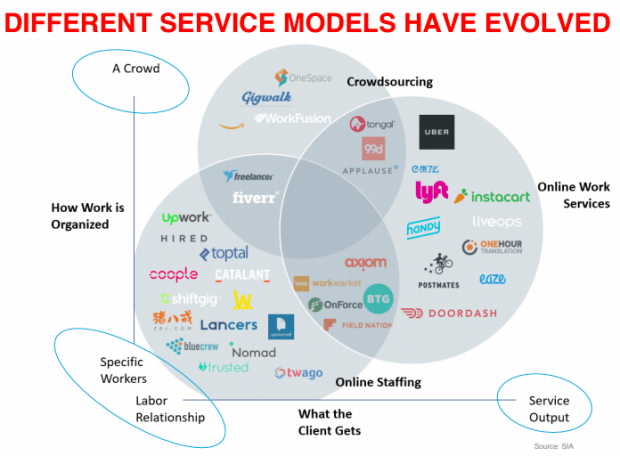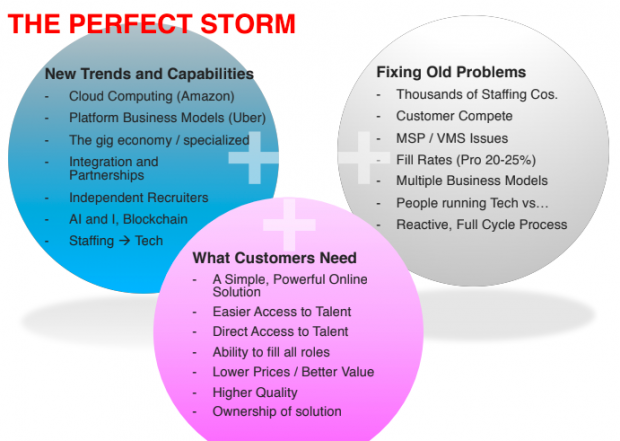Businesses tapping into the gig economy get access to larger labour pools and specialized talent, but not all firms understand this new staffing model to comfortably embrace it.
During a recent webinar co-sponsored by ITWC and the CIO Association of Canada, ITWC President Fawn Annan, Curasion President and Chief Product Officer Andrew Dillane, and David Francis, senior research analyst at Staffing Industry Analysts, broke down what the gig economy is and how businesses can use it.
Built on the foundation of cloud-based platforms like Uber and Lyft, the gig economy connects employers with specialized candidates who are available for contingent and short-term work. By eliminating the middleman in the traditional hiring process, Francis said it’s changing the staffing industry and the way HR operates.
Know alternatively as the human cloud, the demand economy or collaborative consumption, there are three ways the gig economy connects work and workers: online work services, crowdsourcing and online staffing.

“The gig economy gives businesses access to existing resources and data that it might not have been able to access before,” said Dillane.
While the concept may still be new to some, the percentage of companies (1,000+ employees) using online staffing services has grown to 15 percent, from just four percent in 2014. The percentage of companies considering using it has grown to 53 percent, up from just 10 per cent in 2014.
Dillane says he believes the recent rise in the use of cloud-based platforms like the gig economy can be attributed to what he calls “the perfect storm” breaking down the main factors as: new trends and capabilities, the ability to fix old problems, and the ability to provide what customers need.

What kind of businesses are using this tool the most?
According to Staffing Industry Analysts (SIA), 83 per cent of spend in the gig economy is coming from companies with revenues under $100 million. Eighty per cent of that is being spent on remote work, and a startling 63 per cent of spend is going towards the hiring of IT and marketing/creative professionals.
Despite the surge in usage, there are still many businesses yet to adopt the approach. Dillane says it comes down to the fact that it is facilitated by new technology, and it always takes time for everyone to get on board with something new.
“Companies don’t yet realize what is possible. Way back when things moved from horse and buggy to automobiles with Henry Ford, you could really tangibly see the results. Until companies decide to take this plunge and actually get into these online platforms, I think a lot of them don’t yet believe that they can be better, cheaper and faster. There is change involved, and change takes time,” said Dillane.
Dillane encourages this change, noting that the traditional hiring process is only successful 20 per cent of the time. He believes the gig economy can help improve that percentage.
Just as businesses across the world are jumping on board with the gig economy, so are workers.
And Francis says that it simply due to the advantages that are provided by the system for those looking for short-term and contingent work.
“I think a big part of it is just the flexibility and autonomy that is available. A lot of the reason is that they can control their own schedules. They can work when they want to. They don’t have a boss. They’re more or less in control of when and how they work,” said Francis.
As more employers are using the gig economy and a growing number of workers are putting themselves out onto this relatively new market every day, the webinar leaders suggested the gig economy is not going away any time soon.
So you might as well take advantage of it, says Francis.
“If you feel there is a talent gap or if you’re having trouble sourcing, there is a wider talent pool that you may have not thought of. So don’t be afraid to do so.”
